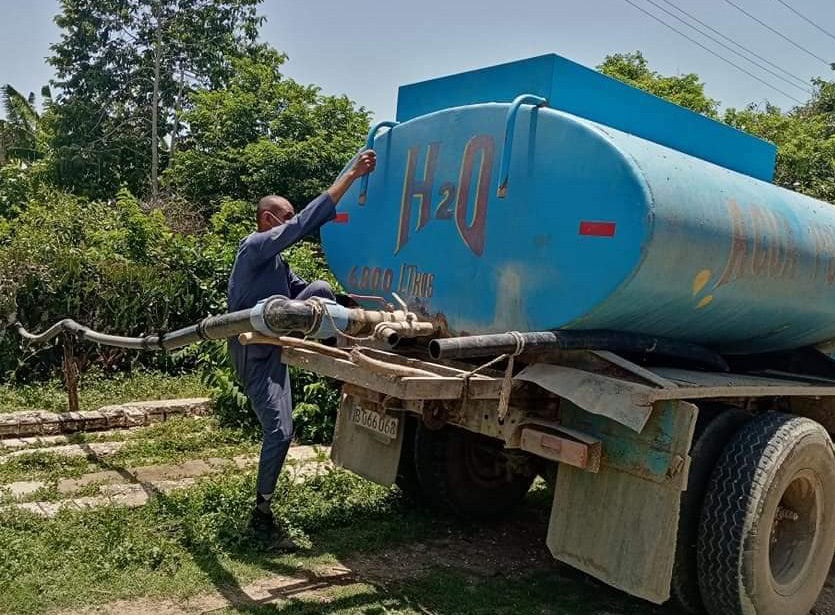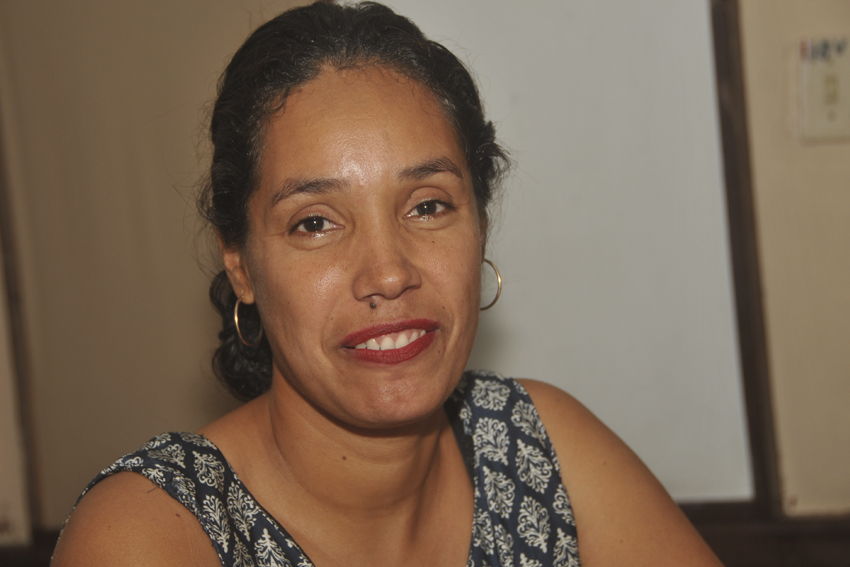
For more than 10 years, rainfall has been below 85 percent of the forecast in the province of Las Tunas. This has caused the accumulated rainfall to be lower in each calendar and, therefore, the forecast for water supply in the territory is not good.
Las Tunas, Cuba.- The reality does not escape from 2023, which has begun with very little rainfall in the soil of Las Tunas, barely 16 percent in the northern part of the territory, undoubtedly the most compromised with the burdens of this situation.
The problem requires drastic measures and, therefore, action plans have been drawn up and implemented by local governments and the Party in each terroir. Strategies that can generate new investments are presented there. The country is giving full priority to this issue and supports the province with everything possible.
26 talked about this issue with Kennia Batista Céspedes, subdelegate of the Delegation of Hydraulic Resources here. Moreover, from the first words, it was clear to us that Manatí is the one with the most complex situation in the whole province.
"In Manatí there is no groundwater availability. The municipality has three dams, but all the supply it had was the subway and that collapsed, it is completely dry, and now a surface water investment is being made.

"We are working on the realization of projects for the search of alternative sources that can increase that volume for the benefit of the population. Hydrogeological studies are being carried out to analyze the wells, the soil, to draw on the experience of the farmers and, if necessary, to allocate sources that were previously used by agriculture and other organizations to help supply the people."
The expert explained some specific cases; among them, the Los Pinos de Manatí campground. This institution is located in the area of the Cerro de Caisimú aqueduct, and it was necessary to restrict the amount of water it receives because the priority is the population.
"This also requires people to save more at home. Because now the supply is on alternate days and the schedules have also been reduced; if before it was eight hours, now it is six, wells are being opened and, in addition, new loaders are being enabled."
"We are studying other sources that were already enabled but were for rural use, such as the well Las Margaritas, in the area of Dumañuecos, which has a large volume in its load. The intention is that, in addition to that, it will compensate for part of the needs of the urban sector."
"The situation of the latter is critical and, with the help of the other planned alternatives, they may not be overexploited; because, also, we have problems with the diesel that is necessary to keep the train that carries water to many places in that municipality active."
Kennia said that the resources and financing are being secured to recharge from the Yariguá dam, which is also close to Cerro de Caisimú, during this year. The work should begin in the next few days and involves a significant investment.
If we make a kind of panning for other sources of water supply to the population, we understand that, although Manatí is the most complex, which is far from assuming that in the rest of the territory, everything goes smoothly.
"The Jobabito dam supplies the population of Bartle and also a part of Guáimaro, a municipality that belongs to the province of Camagüey; so that they don't affect either of them, different supply cycles were adjusted between them."
"In the municipality of Jesús Menéndez is the Juan Sáez dam, which is very affected and restrictions were made in agriculture to protect the supply to the sugar harvest and the population because this reservoir supplies water to a part of Chaparra."
"In that area, there is also Copo del Chato, which also favors Delicias, in Puerto Padre. It is a reserve for any situation that may arise, but it was decided that it no longer contributes to agriculture. The farmers will have to assume their wells and sources since the priority is the population."
"Piedra Hueca, for its part, is already capable of supplying the provincial capital together with Cayojo and Rincón; the three are balanced as a system so that they give water indistinctly to the municipality of Las Tunas, and that puts this one in better conditions."
****
The measures taken in the province against the drought and the works that are being executed in all its geography include other successes. Among them, the construction of 19 wells, the installation of hydrometers in the water supply sources and more than 1,600 meters of meters, and the continuity of the rehabilitation program of networks and pipes in the towns of Delicias and Jesús Menéndez.
In addition, this year we are working to finish the aqueducts in the rural communities of El Rincón (Km 17, 18, 19) and 20 in the municipality of Manatí; and to finish the aqueduct that will benefit more than 3,500 inhabitants of nine coastal communities in the north of the province (Guayacán 4, 5 and 6, Laguna Blanca, La Herradura, Los Jarros, Punta de Tomate, La Boca, and El Yonce).
Work is being done to improve the supply to the city of Las Tunas; among other aspects, with the installation of pumping equipment in El Rincón and Piedra Hueca systems, the placement of valves, as well as the habilitation of easy access points in Bazarales and loading docks in the town of Vázquez.
The reality, beyond all the efforts, is extremely complex; and we all have to be aware of that: managers, decision-makers, and the people. Las Tunas is the driest province in Cuba and, with everyone's effort, every drop counts.






